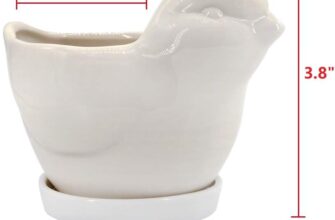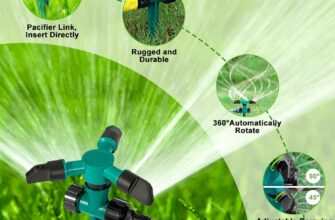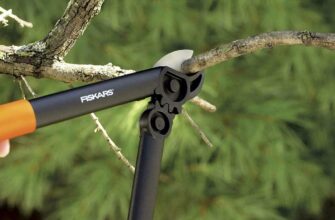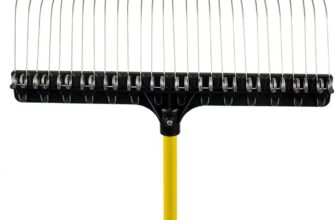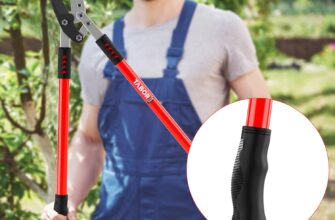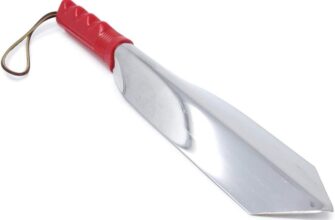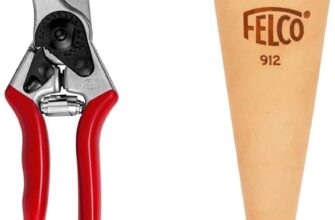Are you ready to reel in some big catches? Look no further than “The Ultimate Guide to Choosing the Perfect Fishing Lure.” Whether you’re a seasoned angler or a beginner looking to cast your first line, this comprehensive guide will help you navigate the vast array of fishing lures available. From understanding the different types of lures to knowing which colors and sizes to pick, you’ll gain valuable insights and expert tips to ensure that every fishing trip is a successful one. So grab your fishing rod and get ready to make the right choice when it comes to selecting the perfect fishing lure.
Understanding the Basics of Fishing Lures
Fishing lures are essential tools for attracting fish and enticing them to bite. They mimic the appearance, movement, and behavior of natural prey, making them highly effective in catching various species. Before delving into the specifics of choosing the perfect fishing lure, it’s important to have a basic understanding of the different types of lures available and the factors to consider when selecting one.
Different Types of Fishing Lures
There are numerous types of fishing lures available, each designed to imitate different types of prey. Some of the most common types include crankbaits, spinnerbaits, jigs, spoons, soft plastic baits, topwater lures, swimbaits, spoonbaits, and buzzbaits. Each lure has its unique characteristics and is suitable for different fishing techniques.
Choosing the Right Fishing Lure
Choosing the right fishing lure can often be a daunting task, with the vast array of options available. However, by considering a few important factors, you can increase your chances of success. Factors such as water clarity, weather conditions, target species, and the behavior of the fish you’re targeting should all be taken into account. Additionally, the size, color, and action of the lure should also be carefully considered to ensure it matches the prey and fishing technique you intend to use.
Matching the Fishing Lure to the Target Species
To effectively catch fish, it’s crucial to match the fishing lure to the target species. Researching the specific species you’re targeting is vital to understand their feeding habits and preferences. By identifying the prey that the target species feeds on, you can choose a lure that closely resembles their natural food source. It’s also important to select the appropriate size and color for the lure, as different species have different preferences.
Researching the Target Species
Before heading out to fish, it’s essential to spend some time researching the target species. Learn about their preferred habitats, feeding patterns, and seasonal behavior. Understanding these aspects will help you select the most suitable fishing lure and increase your chances of success.
Identifying the Prey the Target Species Feeds On
To effectively imitate the natural prey of the target species, it’s crucial to identify the specific prey they feed on. This can be determined by observing their habitat and analyzing their feeding patterns. For example, if you’re targeting bass, you may find that they primarily feed on smaller fish, crayfish, or insects. Knowing this information will help you choose a lure that closely resembles their preferred food source.
Using the Right Color and Size
The color and size of the fishing lure play a significant role in its effectiveness. Different species of fish have different visual preferences, and it’s important to choose a lure color that closely matches the natural prey in the water. Additionally, the size of the lure should be appropriate for the target species. Generally, larger lures are more suitable for larger fish, while smaller lures are better for smaller fish or when fish are feeding on smaller prey.
Examining Different Fishing Lure Styles
There is a wide variety of fishing lure styles available, each designed to attract fish in different ways. These styles include crankbaits, spinnerbaits, jigs, spoons, soft plastic baits, topwater lures, swimbaits, spoonbaits, and buzzbaits. Let’s take a closer look at each of these styles to understand their characteristics and when to use them.
Crankbaits
Crankbaits are versatile lures that imitate the swimming action of prey fish. They have a diving lip that allows them to dive to specific depths and can be retrieved at a constant speed or in a stop-and-go motion. Crankbaits are particularly effective when fishing for predatory fish such as bass, pike, and walleye.
Spinnerbaits
Spinnerbaits are lures that feature one or more spinning blades attached to a wire form, creating flash and vibration in the water. They are excellent for covering large areas quickly and can be retrieved at varied speeds. Spinnerbaits are commonly used for bass, pike, musky, and other predatory fish.
Jigs
Jigs consist of a weighted head and a skirt or soft plastic trailer. They can be used in a variety of fishing techniques, including casting, flipping, and pitching. Jigs are versatile and effective for a wide range of fish species, including bass, walleye, and trout.
Spoons
Spoons are concave metal lures that imitate injured or fleeing prey fish. They are typically cast or trolled and have a wobbling or fluttering action when retrieved. Spoons are popular for targeting species such as trout, salmon, pike, and musky.
Soft Plastic Baits
Soft plastic baits are lifelike lures made of soft plastic materials. They are often designed to resemble worms, crawfish, minnows, or other forage species. Soft plastic baits are versatile and can be used with various fishing techniques, including Texas rigs, Carolina rigs, and drop shots. They are effective for a wide range of fish species, including bass, trout, walleye, and panfish.
Topwater Lures
Topwater lures are designed to create a commotion on the water’s surface, imitating the movement of prey such as frogs, insects, or injured fish. They are typically retrieved with a twitching or popping action, which can elicit explosive strikes from predatory fish. Topwater lures are ideal for fishing in shallow water or during low-light conditions and are popular for targeting species such as bass, pike, and musky.
Swimbaits
Swimbaits are soft plastic lures that resemble baitfish and have a natural swimming action. They are commonly used for targeting larger predatory fish such as bass, pike, and musky. Swimbaits can be retrieved steadily or with intermittent pauses to mimic the movement of injured or fleeing prey.
Spoonbaits
Spoonbaits are metal lures that resemble the shape and action of a spoon. They are typically retrieved with a fast, steady retrieve and create a side-to-side wobbling motion. Spoonbaits are effective for a wide range of fish species, including bass, trout, salmon, and pike.
Buzzbaits
Buzzbaits are topwater lures that feature a propeller blade on the front, creating noise and surface disturbance as they move through the water. They are typically retrieved at a fast, steady pace and are effective for targeting bass, pike, and musky.
Understanding Fishing Lure Materials and Construction
Fishing lures are made from a variety of materials, each offering different advantages and disadvantages. Some common materials used in lure construction include plastic, wood, metal, and rubber. Understanding the properties of these materials will help you make an informed decision when selecting a fishing lure.
Common Fishing Lure Materials
Plastic lures are durable, affordable, and come in a wide variety of colors and shapes. They are versatile and can be used for various fishing techniques. Wood lures have a natural look and buoyancy but require more maintenance. Metal lures are often used for saltwater fishing due to their corrosion resistance. Rubber lures are soft and lifelike, making them ideal for imitating prey fish.
Advantages and Disadvantages of Different Materials
Plastic lures are popular due to their affordability and versatility, but they may lack the durability of other materials. Wood lures offer a natural appearance and can have excellent buoyancy, but they require periodic maintenance to prevent water damage. Metal lures are durable and resistant to saltwater corrosion, but they can be less lifelike compared to other materials. Rubber lures are soft and flexible, providing a realistic feel to fish, but they can be more prone to damage and wear.
Construction Techniques and Durability
Fishing lures can be constructed using various techniques, including injection molding, carving, and assembling individual components. The construction technique used can affect the durability and performance of the lure. Injection-molded plastic lures are highly durable and consistent in shape, while hand-carved wooden lures require more craftsmanship and may vary in performance. Assembled lures, such as spinnerbaits or jigs, can offer customization options and the ability to replace components easily.
Exploring Fishing Lure Colors
The color of a fishing lure can have a significant impact on its effectiveness. Different fish species have different color preferences, influenced by factors such as water clarity and lighting conditions. Understanding the principles of color theory and considering the prevailing water conditions can help you choose the most suitable lure color.
Color Theory and Impact on Fish
Fish perceive colors differently depending on their physiology and the environmental conditions they inhabit. In general, bright and contrasting colors are effective in turbid or stained water, while more natural and subtle colors work well in clear water. Factors such as light intensity, water depth, and vegetation cover should also be considered when selecting lure colors.
Popular Fishing Lure Colors
Some popular fishing lure colors include chartreuse, white, black, silver, and natural hues such as brown or green. These colors often mimic common prey fish or attract attention through contrast or reflective properties. However, lure color selection should be tailored to the specific prey species you’re imitating and the prevailing water conditions.
Choosing Colors Based on Water Conditions
In clear water, it’s generally best to choose lure colors that closely resemble the natural prey in the area. Consider using colors such as green, brown, or silver. In stained or turbid water, brighter colors like chartreuse, orange, or red can be more effective. Experimentation and adapting to changing water conditions are key to finding the most productive lure colors.
Analyzing Fishing Lure Sizes and Weight
The size and weight of a fishing lure play a crucial role in its effectiveness. Matching the lure size to the target species and the prevailing fishing conditions is essential for enticing bites and achieving the desired action.
Factors Affecting Size and Weight Selection
When selecting the size and weight of a fishing lure, several factors should be taken into account. These include the target species of fish, the natural prey size in the area, the fishing technique employed, and the prevailing water conditions. Larger lures are generally more suitable for larger fish species and when imitating larger prey.
Balancing Lure Size and Target Species
Choosing the right lure size is essential to attract the target species. It’s important to consider the average size of the fish species you’re targeting and the size of the natural prey they feed on. If the target species primarily feed on small insects or tiny baitfish, using a smaller lure will increase your chances of success. On the other hand, if you’re targeting larger fish that prey on bigger baitfish, a larger lure may be more effective.
Fine-Tuning Weight for Desired Fishing Technique
The weight of a fishing lure can impact its action and presentation in the water. Lighter lures are generally more suitable for finesse techniques or when fish are feeding in shallower water. Heavier lures, on the other hand, allow for longer casts and can reach greater depths. Understanding the fishing technique you plan to use and the desired presentation will help you determine the appropriate lure weight.
Considering Fishing Location and Conditions
The location and conditions in which you fish can greatly influence your choice of fishing lure. Whether you’re fishing in freshwater or saltwater, different bodies of water require different lure preferences. Additionally, adapting to weather and seasonal changes is important for maximizing your chances of success.
Freshwater Fishing
Freshwater fishing offers a diverse range of fishing opportunities, from calm lakes to fast-flowing rivers. When selecting a fishing lure for freshwater fishing, consider the specific species you’re targeting, the water clarity, and the prevalent vegetation or structure. Bass, trout, walleye, and panfish are some common freshwater species that can require different lure styles, sizes, and colors.
Saltwater Fishing
Saltwater fishing presents its own set of challenges, including harsher conditions, larger fish species, and the need for corrosion-resistant lures. When selecting saltwater fishing lures, consider the target species, the prevailing depth and current patterns, and the specific geographic region. Saltwater species such as striped bass, redfish, snook, and tarpon require different lure styles, sizes, and colors than their freshwater counterparts.
Different Lure Preferences for Various Water Bodies
Different bodies of water have unique characteristics that influence the choice of fishing lure. For example, fishing in a clear, rocky mountain stream may require smaller, natural-looking lures, while fishing in a weedy lake may necessitate the use of weedless soft plastic baits. Understanding the specific features of the water body you’re fishing will guide your lure selection.
Adapting to Weather and Seasonal Changes
Weather conditions and seasonal changes can significantly impact fish behavior and feeding habits. When planning your fishing trip, consider the weather forecast, water temperature, and the time of year. Fishing during the spring may require different lure styles and colors compared to fishing in the hot summer months or the cold winter season. Adapting to these changes will improve your chances of success.
Exploring Fishing Lure Action and Movement
The action and movement of a fishing lure can entice fish and trigger their predatory instincts. Understanding lure action, the different types of movements, and how to match them to your fishing technique will increase your chances of attracting bites.
Understanding Lure Action
Lure action refers to the movement and behavior of the lure in the water. Different lure styles and designs produce various actions to imitate the natural movements of prey fish. Examples of lure actions include wobbling, swimming, darting, popping, and spinning. Understanding the intended action of your chosen lure will help you create a lifelike presentation.
Types of Lure Movements
Fishing lures can produce various types of movements to imitate different prey behaviors. Some lures are designed to produce a side-to-side wobbling motion, while others mimic the erratic movements of an injured fish. Additionally, certain lures create surface disturbances, vibrations, or popping sounds to attract fish from a distance. Choosing the appropriate lure movement based on the behavior of the target species will increase your chances of success.
Matching Lure Action to Fishing Technique
Different fishing techniques require specific lure actions to achieve the desired presentation. For example, when using a crankbait, a steady retrieve with occasional pauses can imitate a wounded fish. On the other hand, when using a topwater lure, a twitching or popping retrieve can create surface disturbance to attract fish. Matching the lure action to your chosen fishing technique will make your presentation more realistic and enticing.
Use of Extra Features for Enhanced Movement
Some fishing lures incorporate extra features to enhance their movement and action. These features can include rattles, blade attachments, or jointed sections. Rattles can create additional noise and vibration, attracting fish from greater distances. Spinner attachments can add flash and vibration to a lure, increasing its visibility and appeal. Jointed lures have increased flexibility, allowing for more lifelike swimming action. Considering these extra features can add versatility and effectiveness to your fishing lures.
Evaluating Fishing Lure Hooks
The choice of fishing lure hooks is essential for improving hook-up ratios and ensuring a secure connection with the fish. Understanding the different types of hooks, selecting the proper hook size, and maintaining sharpness are crucial for successful fishing.
Types of Hooks
There are various types of fishing hooks available, each designed for specific fishing techniques and target species. Some common hook types include the J-hook, treble hook, circle hook, and weedless hook. The right hook type should be chosen based on the fishing technique and the size and behavior of the target species.
Proper Hook Size for Target Species
Selecting the proper hook size is vital for ensuring a secure hookset and reducing the risk of fish throwing the hook. The hook size should match the mouth size of the target species and the size of the lure being used. A hook that is too small may result in missed hooksets, while a hook that is too large can impede the natural movement of the lure.
Single vs. Treble Hooks
The choice between single and treble hooks depends on the fishing technique and the behavior of the target species. Single hooks provide better hook penetration and are less prone to snagging vegetation or other structures. They are commonly used in finesse techniques or when using soft plastic baits. Treble hooks offer a higher chance of hooking fish, especially for species with smaller mouths or when using lures with multiple points of contact.
Sharpening and Maintaining Hooks
Sharp hooks are crucial for increasing hook-up ratios and reducing the risk of fish throwing the hook. Regularly inspecting and sharpening hooks is essential to maintain their sharpness. Hook sharpeners or replacement hooks can be used to ensure optimal performance. Proper hook maintenance will ensure that your fishing lures are always ready for action.
Considering Fishing Lure Retrieval Techniques
In addition to selecting the right fishing lure, mastering retrieval techniques is key to attract fish and trigger strikes. Varying retrieval speed, depth, and using jerks, twitches, and pauses can make your lure presentation more enticing and increase your chances of success.
Key Retrieval Techniques
Different fishing techniques require specific retrieval techniques to produce a lifelike presentation. Some common retrieval techniques include steady retrieves, stop-and-go retrieves, jerking or twitching retrieves, and bottom bouncing. Understanding these techniques and when to use them will help you adapt to the behavior of the target species.
Varying Retrieval Speed and Depth
Varying the retrieval speed and depth can simulate the movements of prey fish and attract the attention of predatory fish. Experimenting with different speeds, pauses, and depths will help you dial in on the most effective presentation for the target species. Fast retrieves can imitate fleeing prey, while slower retrieves may trigger strikes from sluggish or less active fish.
Using Jerks, Twitches, and Pauses
Incorporating jerks, twitches, and pauses in your retrieval technique can create an erratic, injured fish-like action. These sudden changes in lure movement can trigger instinctual predatory responses from fish and entice them to strike. Experiment with different combinations of jerks, twitches, and pauses to find the most effective retrieval technique for your chosen fishing lure.
By understanding the different types of fishing lures, matching them to the target species, considering their materials and construction, analyzing colors, sizes, and weights, adapting to fishing locations, exploring lure action and movement, evaluating hooks, and mastering retrieval techniques, you will be well-equipped to choose the perfect fishing lure for any fishing situation. Remember, fishing is a lifelong learning process, and experimenting with different techniques and approaches will lead to a deeper understanding and increased success on the water. Happy fishing!
